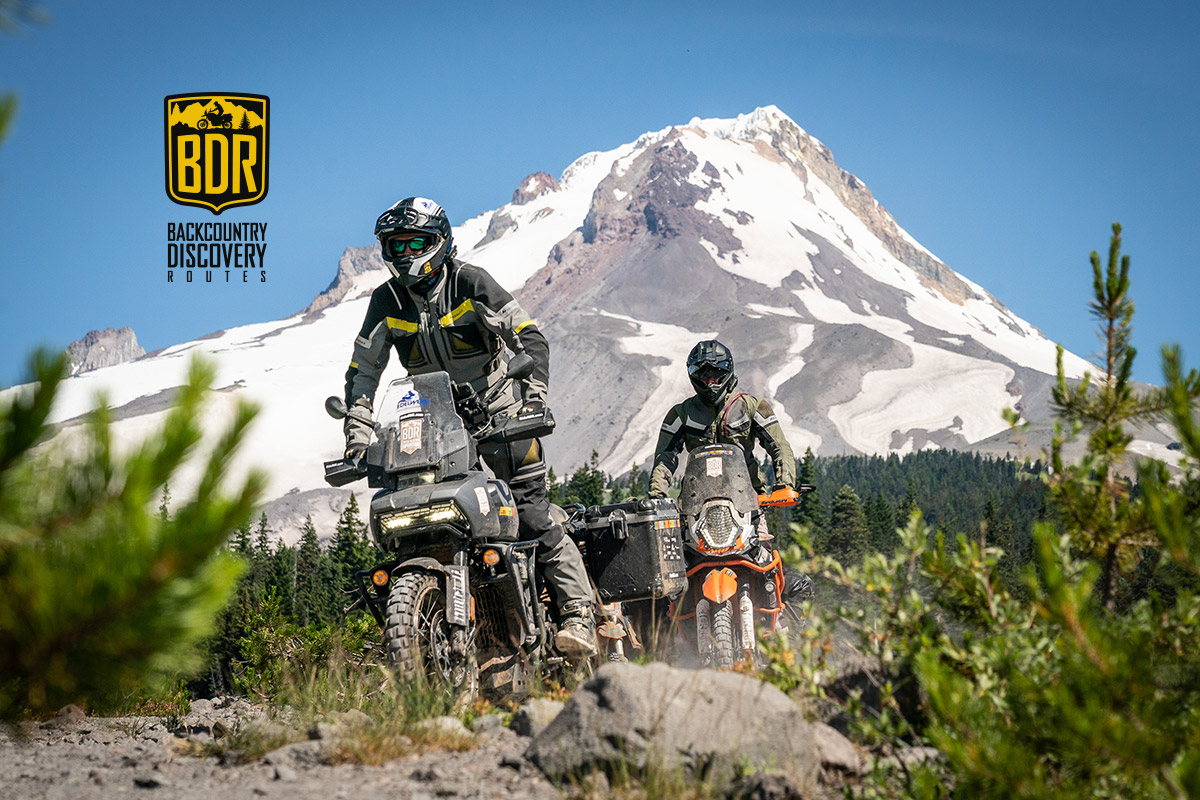The Oregon Backcountry Discovery Route runs from south to north through the diverse landscapes of the state in the Pacific Northwest of the USA. Adventure riders must be prepared for long stages without supply facilities as well as technical riding challenges.
The Oregon BDR is one of the most eagerly awaited Back Country Discovery routes. It stretches over 1100 kilometres and is divided into seven sections, ranging from just under 100 to almost 250 kilometres between fuel stops.
The route begins in the tiny town of Denio Junction, Nevada, and ends in the hills of Hood River, Oregon, on the banks of the Columbia River. After almost five years of scouting, the route is now ready for publication. The ORBDR not only offers a unique off-road adventure for motorbike travellers, but also perfectly depicts the state's scenic diversity.
The challenging route begins in the high desert in the south, leads through ponderosa pine forests with bizarre lava rocks in central Oregon and ends in the Cascade Mountains with its beautiful Douglas fir forests, volcanic peaks, rivers and lakes.
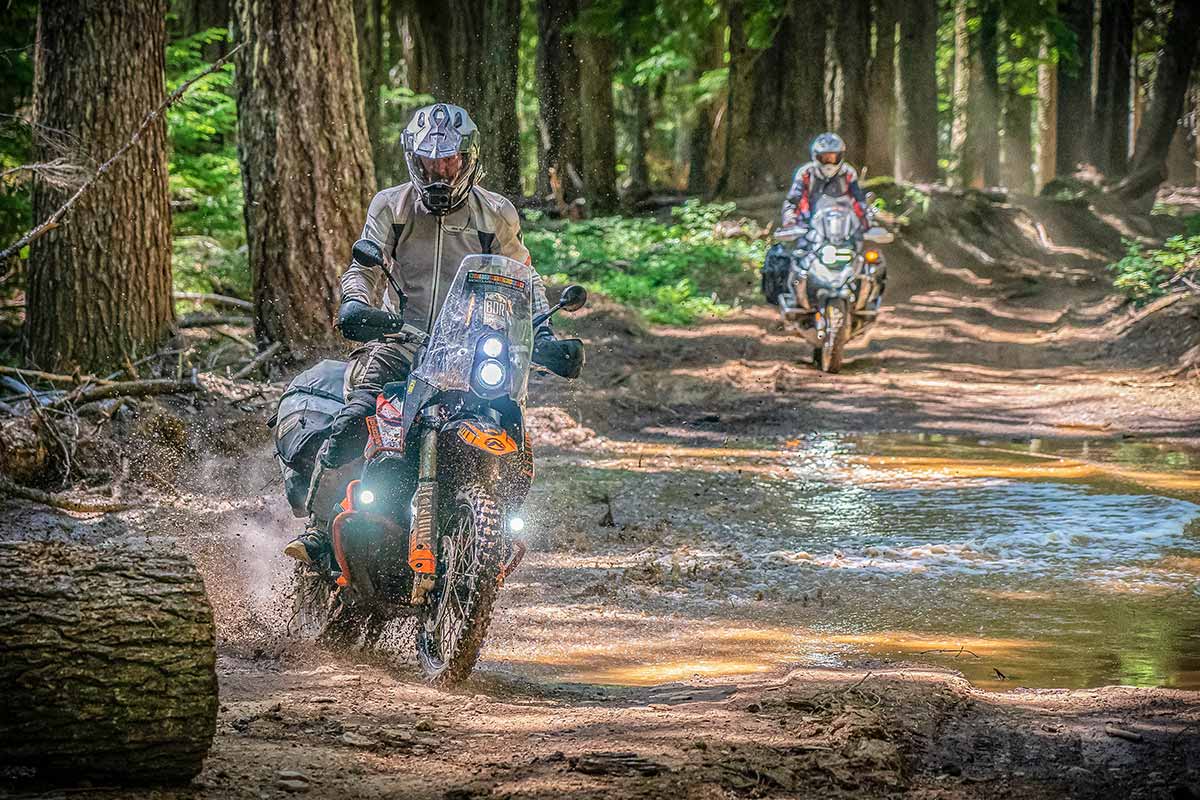
The conditions of the tracks and trails challenge riders all along the route.
Section 1: Denio Junction to Plush
The term "seclusion" probably best characterises the first section of the ORBDR. Our view from Beatys Butte, a hill about 1200 metres high, sweeps 360 degrees over the steppe-like, slightly hilly surroundings without any trace of human activity. As we continue our journey through the dry grasslands, our contact with civilisation is limited to a few remote cattle ranches.
The route leads along dirt roads, which are sometimes quite stony and challenging. Later in the season, when temperatures rise and rainfall becomes less frequent, the roads can become sandier, with loose material that almost swallows the front tyre. Careful driving is advised in this wasteland anyway.
The route in this section takes you further away from civilisation than most other BDRs. The bikes must have a range of almost 250 kilometres. Accommodation is rustic, rare and must be booked well in advance. But we have opted for wild camping.
On the first night we camp at Hart Mountain Hot Spring and enjoy a relaxing dip in the springs before bed - a much-needed rejuvenation for the challenge of Fandango Canyon ahead.
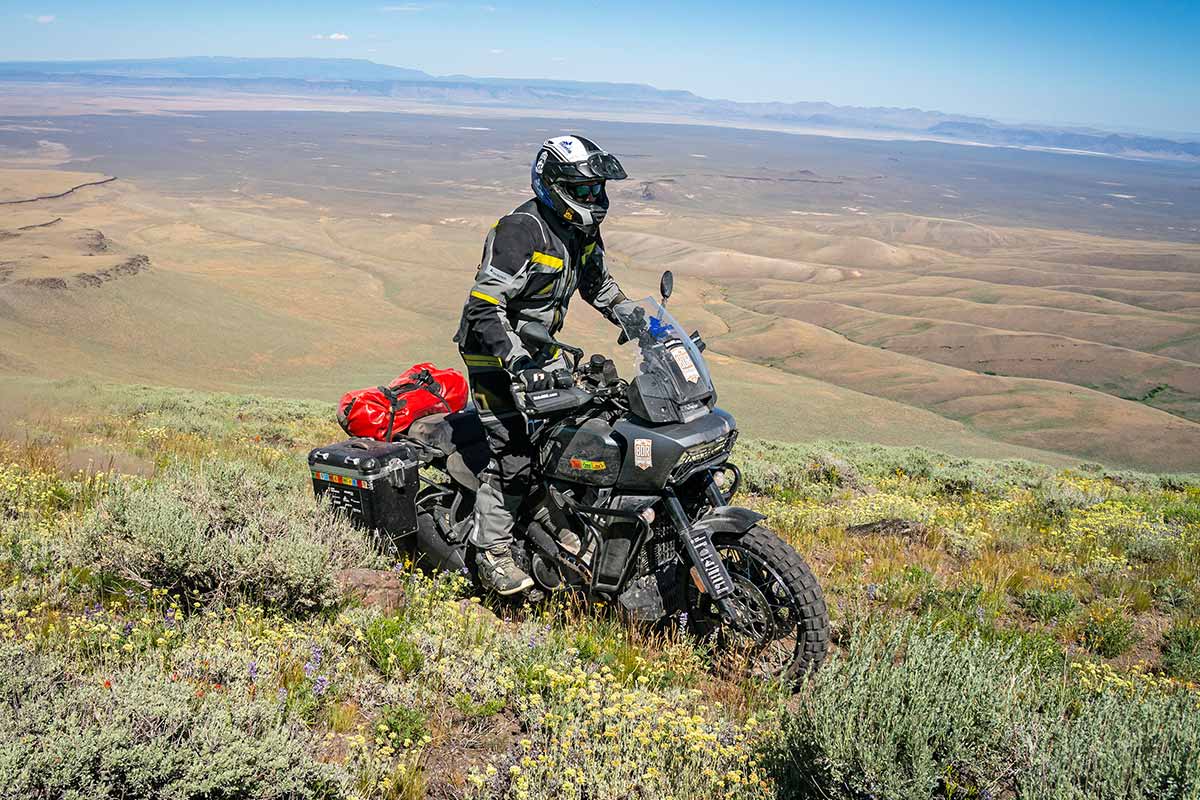
Great views from the optional route to Beatys Butte
Section 2: Plush to Christmas Valley
We start in the small town of Plush, which takes its name from a local card game played here in the 19th century, when the town was a centre for cattle and sheep ranchers. Leaving the town, the road condition soon changes from paved to a wide gravel road to a rough and narrow trail where we, as motorcyclists, have to choose between the upper or lower bike lane.
This rocky trail leads us into the Coyote Hills and down into Rabbit Canyon, then along Lake Abert, which only has water seasonally. The further north we progress along Sheep Rock Road and Fandango Canyon, the more challenging the terrain becomes. Long sandy sections are repeatedly interrupted by technical rock passages. But the worst is behind us when we arrive in Fandango and start the descent into Christmas Valley.
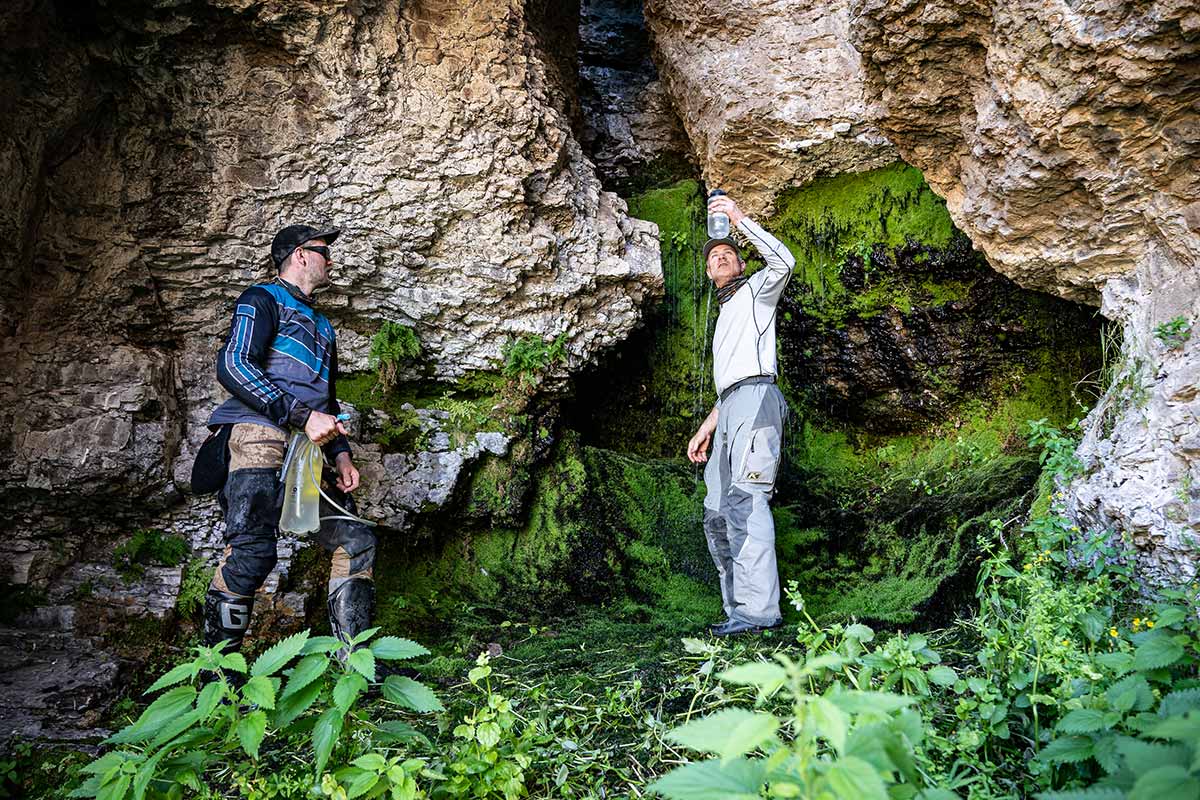
Riders quench their thirst at a spring
Section 3: Christmas Valley to Sunriver
Our stay at the Lakeside Motel in Christmas Valley was a welcome respite from the strenuous stage of the previous day. The countless rocks and stones we rolled over not only gave us a flat tyre, but also damaged a front tyre so badly that we have to change it before the start.
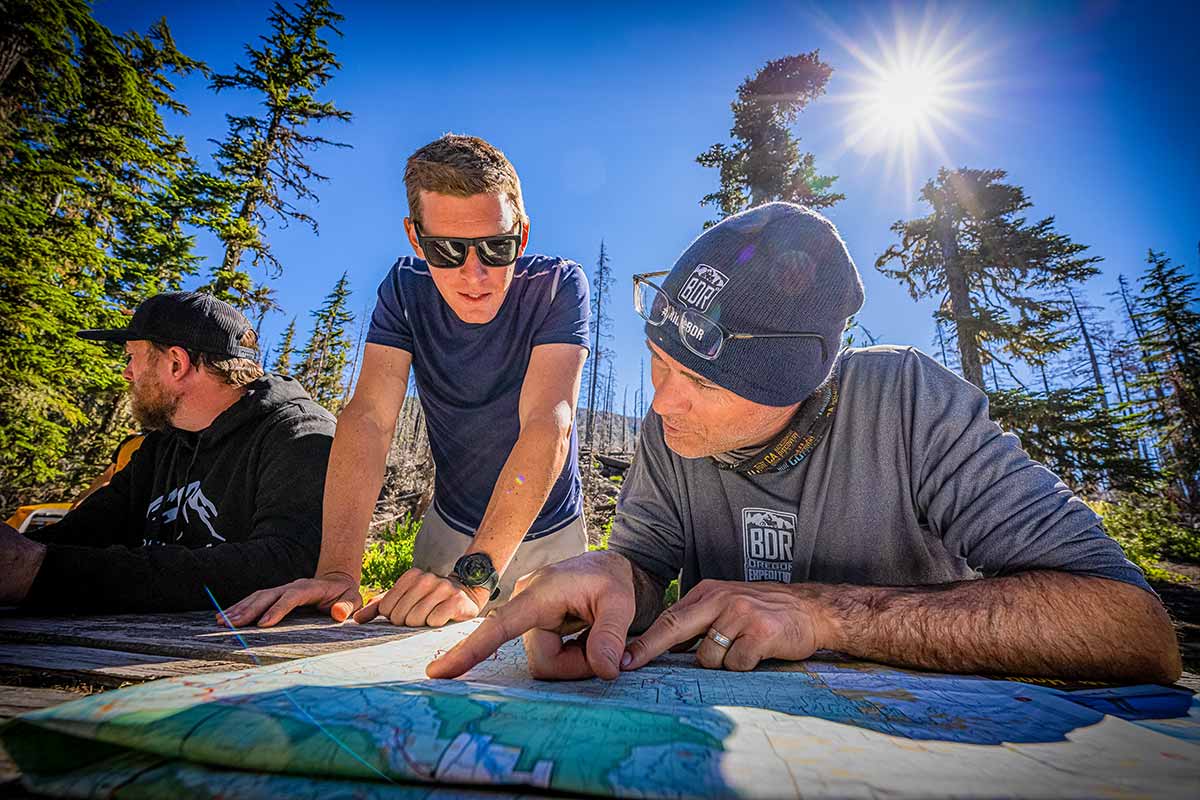
Good navigation is necessary to stay on the right track
The landscape changes as soon as you leave Christmas Valley. Fragrant juniper trees and huge ponderosa pines line the track of red volcanic rock.
This third section offers two variations, both worth riding. Pine Mountain Observatory is a worthwhile stop for stargazers or those looking for a great campsite with a grand view. The detour to the Newberry National Volcanic Monument, on the other hand, surprises with two sparkling lakes in a caldera created by volcanic activity. At these pristine lakes you can camp or stay quite comfortably in cabins.
The last stretch to Sunriver is one of the most fun sections on the whole route, reminding us of a bobsled track for motorbikes with its numerous steep curves.
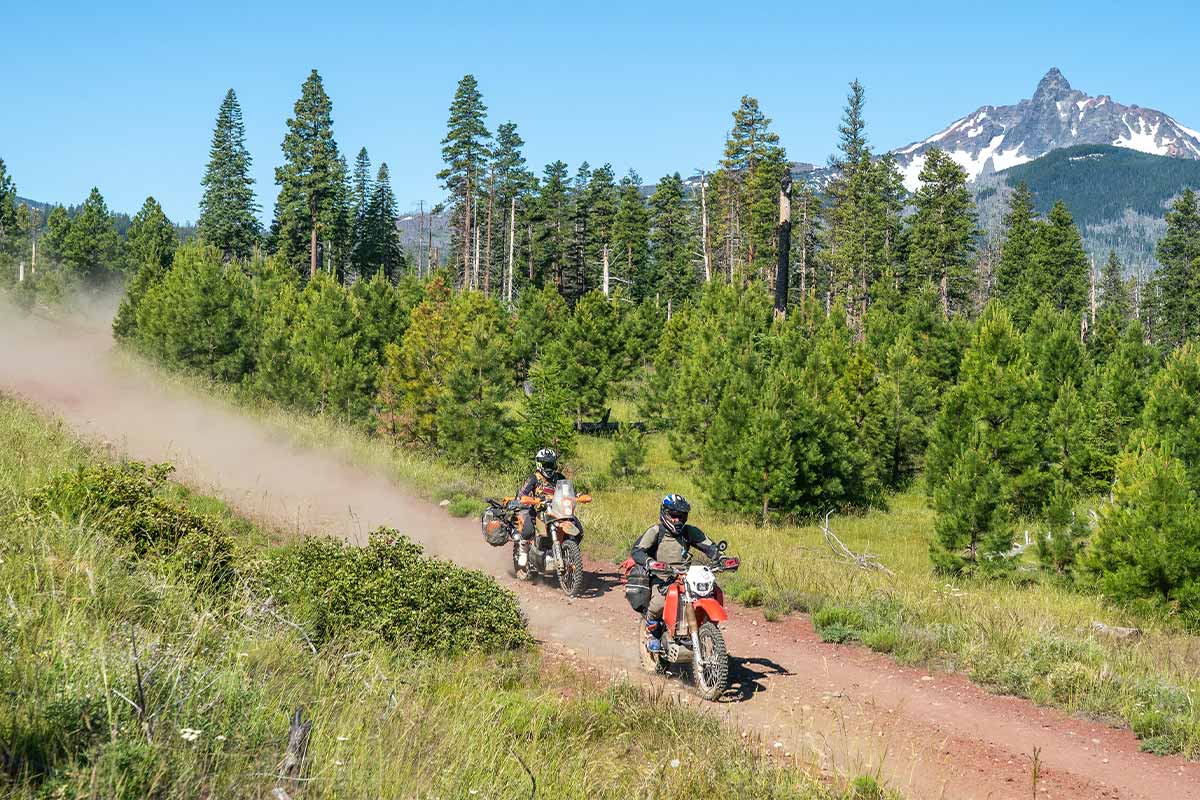
Impressive mountain scenery in the northern part
Section 4: Sunriver to Sisters
The soothing sound of the Deschutes River wakes us up on the fourth day of our journey along the ORBDR. With only about 100 kilometres, the shortest section of the route awaits us today. But what it lacks in length, it more than makes up for in beauty and riding challenges - especially on the optional, challenging section up to the summit of Three Creek Butte with views of snow-capped volcanoes.
The town of Sisters is named after the nearby Three Sisters Mountains. It's a western town with great food, some nice accommodation and the opportunity to buy spare parts from a motorbike shop if needed.
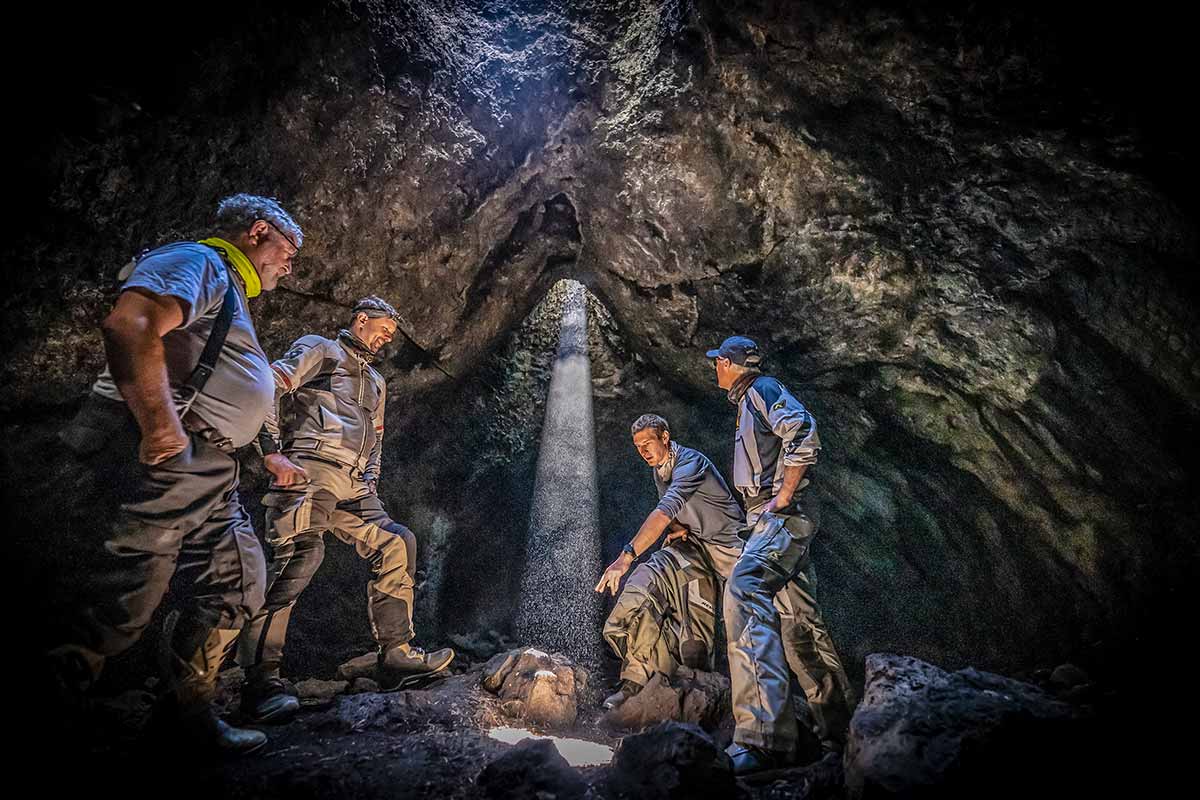
Bizarre light shows in an underground lava tunnel
Section 5: Sisters to Detroit
On this section of the route, the climate and landscape change again - the heat and dryness of the south give way the closer we get to the Cascade Mountains. With great amazement we explore Skylight Cave, where an underground lava flow once poured, columns falling through former vents into the darkness as if from heavenly light.
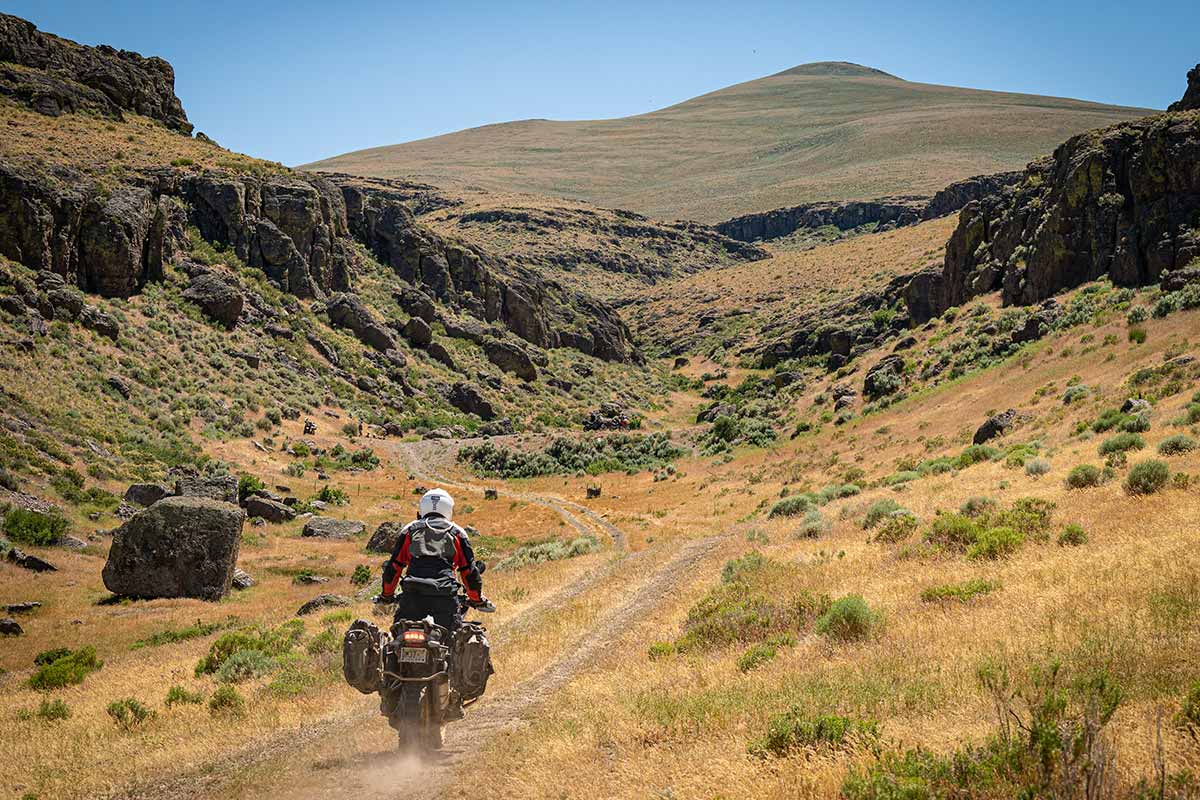
Rugged and remote canyon landscapes serve all clichés of the Wild West
Soon we are fascinated by the sight of the snow-covered, craggy four-thousand-metre peaks, as long as we can take our eyes off the difficult track, because deep sand, rock steps and loose volcanic rock require our full concentration.
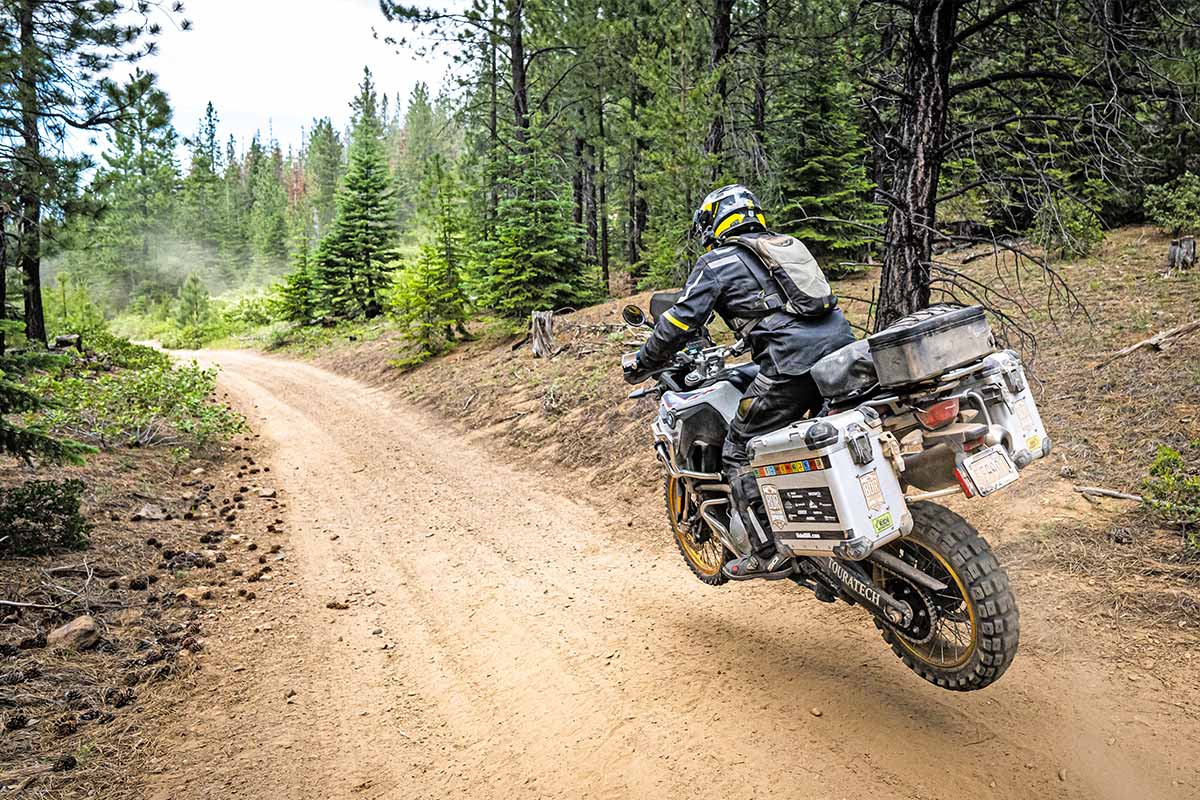
Open road sections invite to a brisk pace
Section 6: Detroit to Government Camp
The story of Detroit, OR, is one of disaster, survival and rebirth, as the city was hit by one of the most devastating wildfires to hit Oregon in 2020. The city is still in the process of rebuilding, which will surely take many years. Some parts of Section 6 of the ORBDR will remain closed for at least a few more years as cleanup is ongoing.
One of the best aspects of the BDR concept is the positive economic impact that motorbike travellers have on small towns that are struggling. By buying supplies and fuel or going to a restaurant, adventure riders bring money to structurally weak areas. And with cities like Detroit, a few dollars often makes a big difference.
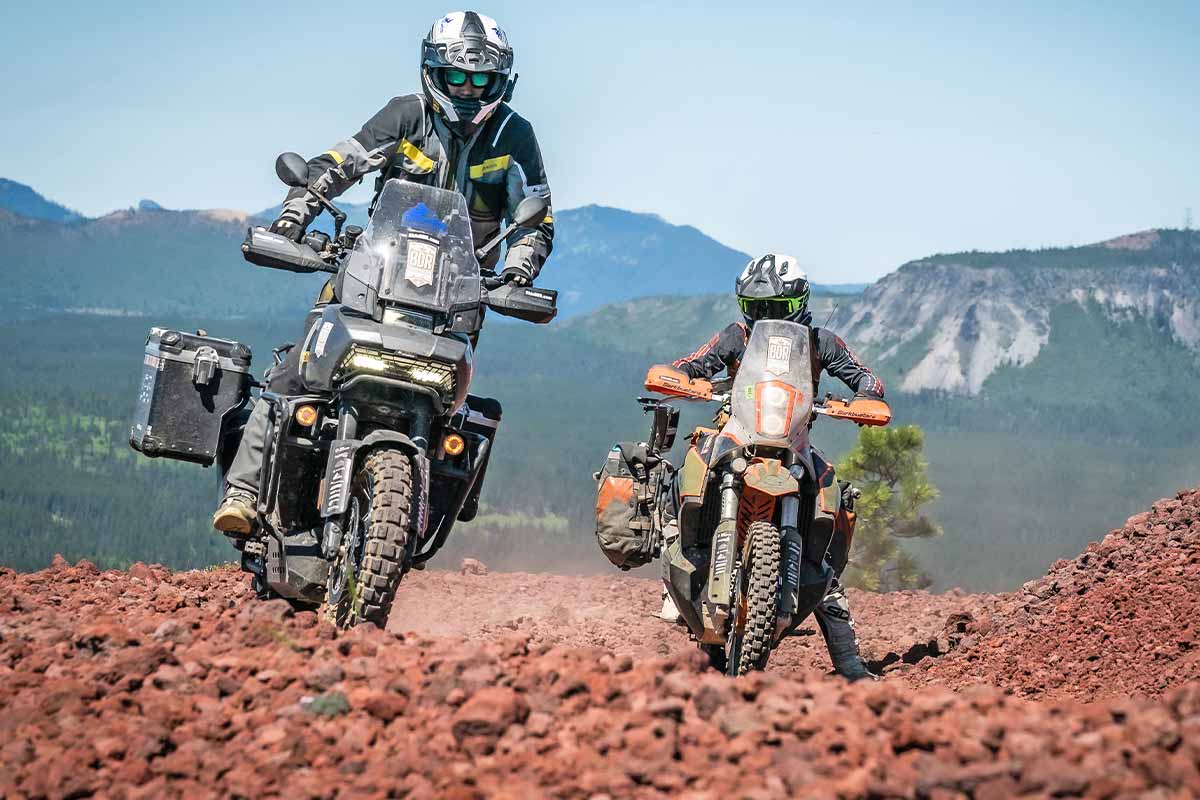
Again and again we encounter volcanic rock in various grain sizes
As we move deeper into the dense green of the forest, we are confronted with mud for the first time on this tour. Deep, wide, tyre-swallowing mud patches lie ahead of us, and water holes in the face of which we wonder more than once whether momentum and nerve will be enough to reach the other bank.
Section 7: Government Camp to Hood River
The last section of the ORBDR begins with an impressive view of Oregon's highest mountain. At over 3000 metres high, Mt Hood dominates the skyline. A stop at White River Sno-Park gives us the opportunity to admire this massive massif in all its snow-covered beauty.
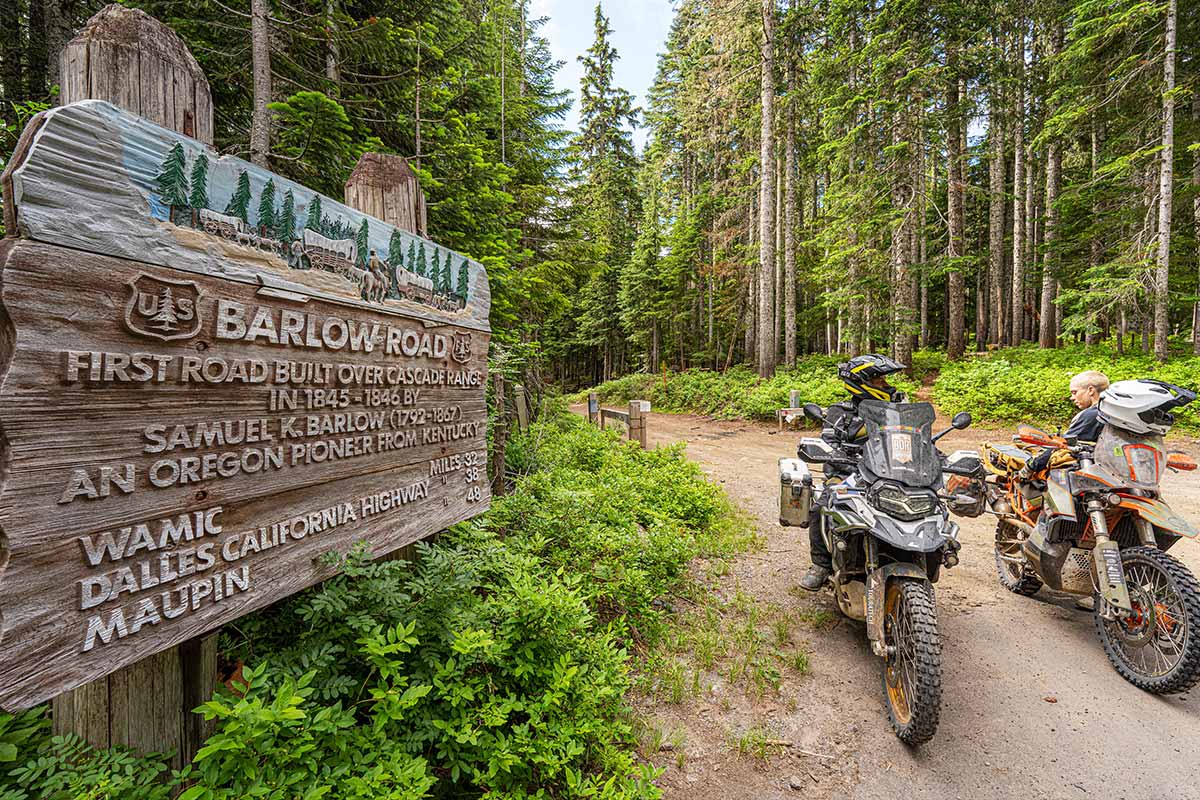
The Barlow Road opened up the Cascade Mountains in 1846.
The Barlow Wagon Road, a road travelled by emigrants in the mid-19th century, captures the imagination and offers the opportunity to travel along the historic Oregon Trail.
Bennett Pass Road, built in the 1930s to access the High Prairie Forest Service Guard Station, is narrow, rocky and challenging. Our attention is constantly torn between the technical driving, the stunning views of Mt. Hood and the lush forest all around.
With Mt. Hood behind us and Mt. Adams ahead, we descend to Hood River and finally to the mighty Columbia River. The northern end of the Oregon BDR dismisses us with one last reminder of the intense beauty of the Pacific Northwest that we should all preserve and protect. After all, BDR's primary goal is to preserve our privilege of riding motorbikes off the beaten track.
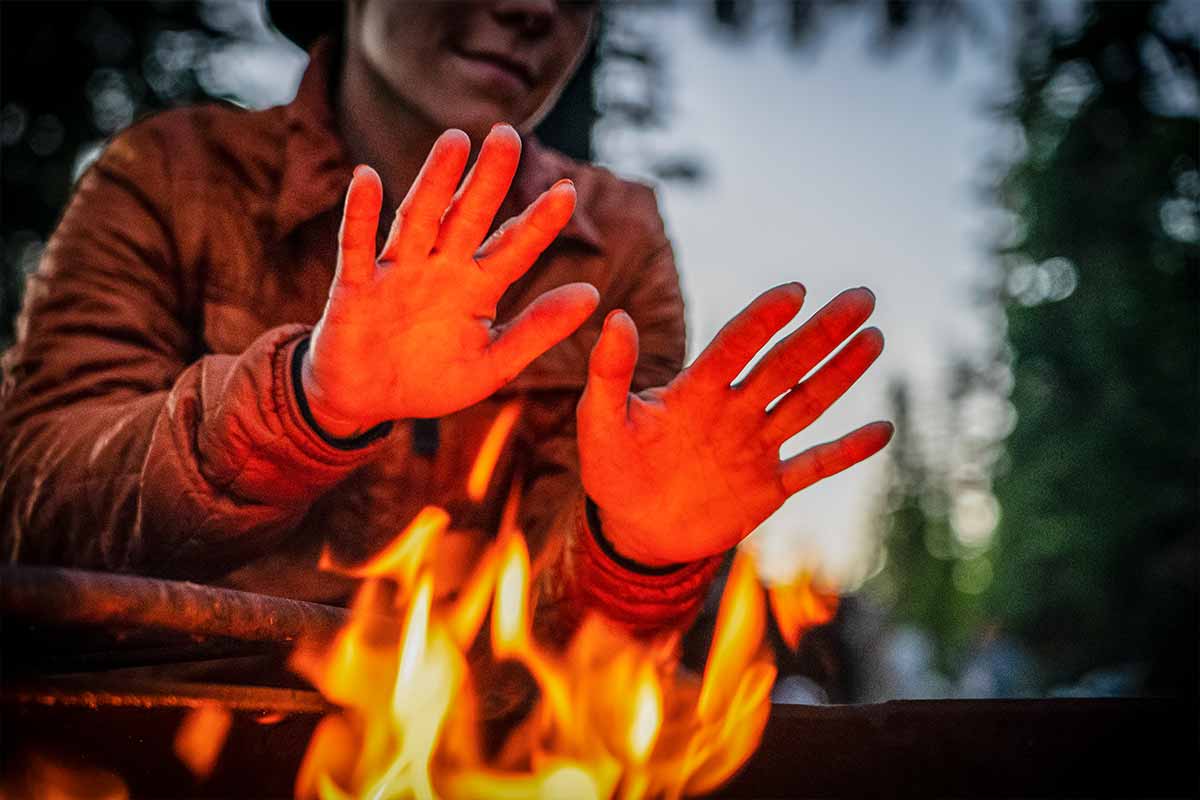
In the high altitudes on the northern stages it gets fresh in the evening
The Team
An illustrious group of riders took to the Oregon BDR on adventure bikes of various classes: Tim James, BDR Board President, Iain Glynn, Chief Riding Officer at Touratech-USA, Bryce Stevens, BDR Co-Founder and Co-Planner of the ORBDR Route, Nathan Fant, BDR Ambassador, Co-Planner of the ORBDR Route and author of this report, Tobias Wachter, Managing Director & Owner of Edelweiss Bike Travel, Ashley Myhre, Mosko Moto Brand Ambassador, Ricardo Rodriguez, Senior Motorcycle Instructor, BMW Performance Center (from left to right).
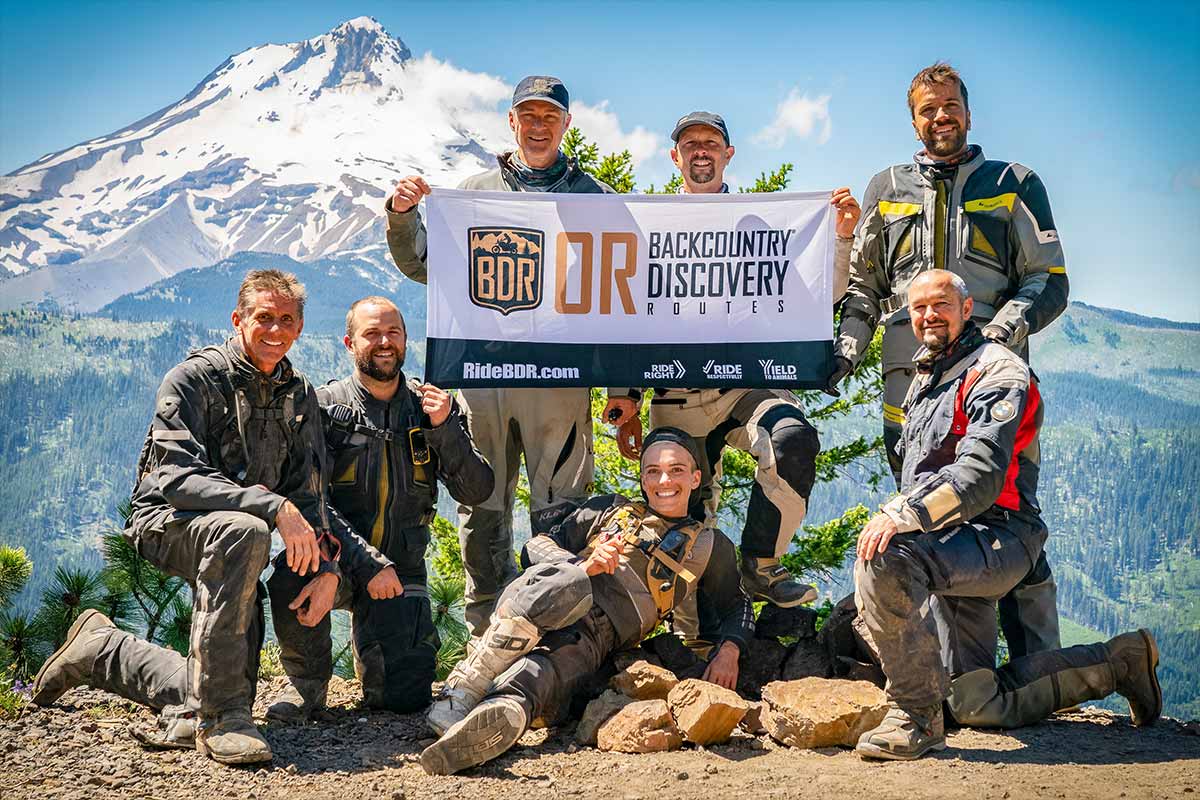
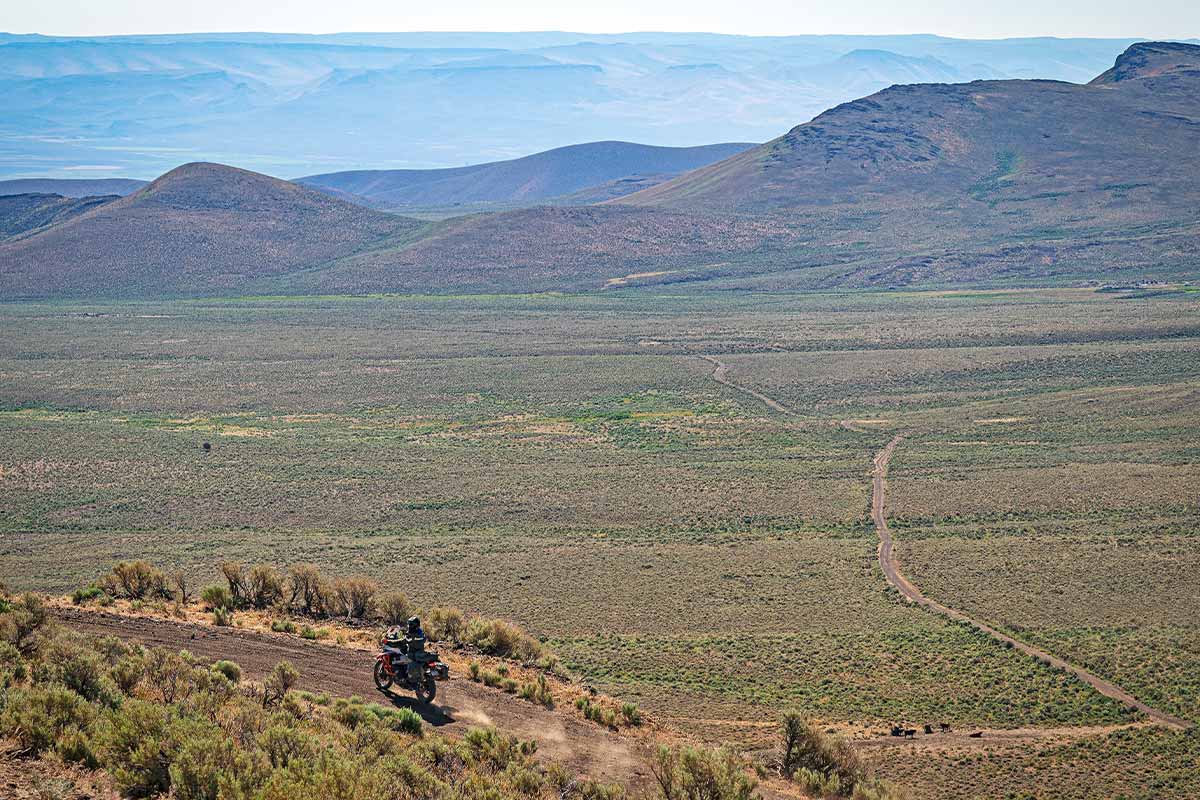
Wide open spaces characterise the southern sections of the ORBDR
About Backcountry Discovery Routes (BDR)
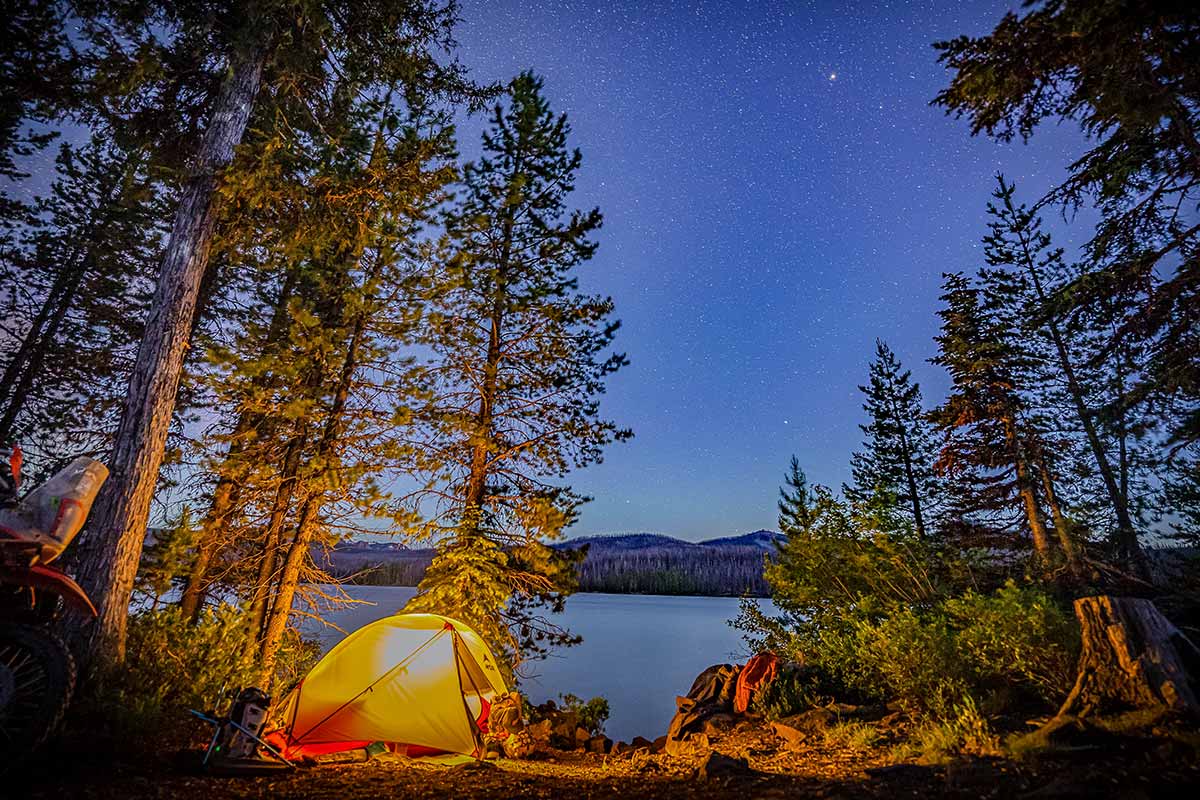
Wonderful places to camp are everywhere












